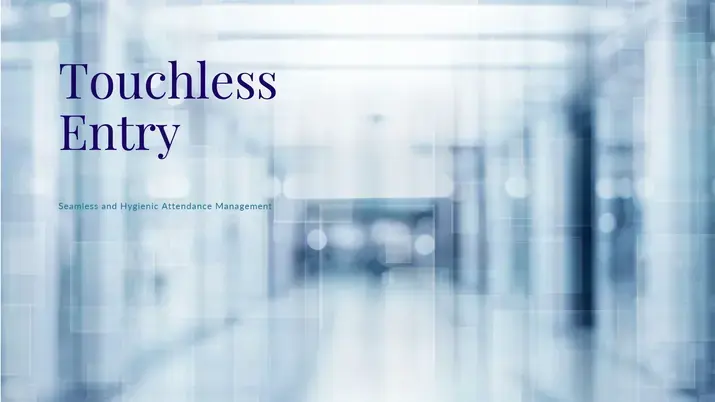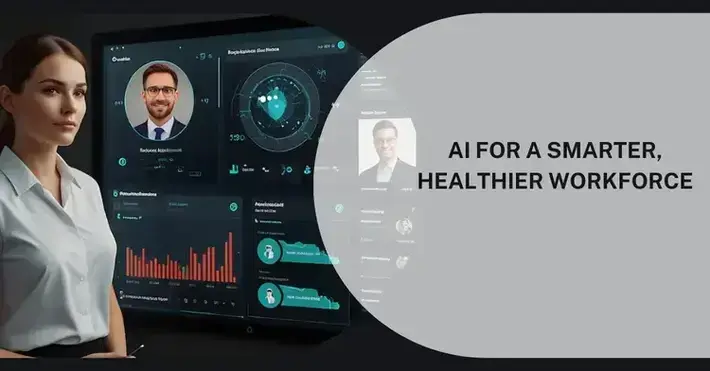Multi-Venue, Anytime, Anywhere: Enhancing Attendance Management Across Locations
Published: Nov 27, 11:05 AM

As organizations expand and evolve, managing attendance across multiple locations has become an increasingly complex challenge. With employees working across different venues, including corporate offices, remote branches, client sites, and even from home, traditional attendance systems can no longer keep up. In today’s digital age, an efficient, flexible, and real-time solution for tracking attendance across multiple venues is essential. This blog post will explore how modern attendance management systems are enhancing accuracy, efficiency, and flexibility, making it possible for businesses to manage attendance anytime, anywhere.
The Growing Need for Multi-Venue Attendance Management
Gone are the days when employees worked in one physical location. Remote work, hybrid work environments, and companies with offices spread across various geographic regions are becoming the norm. While this offers flexibility and opens up new avenues for growth, it also introduces significant challenges in terms of managing attendance.
For businesses with employees working from multiple venues whether on-site at a customer location, at a remote branch, or working from home attendance management becomes more than just tracking when employees clock in or out. The goal is to ensure consistency, security, compliance, and data integrity across all locations.
Challenges Faced in Multi-Venue Attendance Tracking
- Inconsistent Attendance Data Managing attendance manually or with isolated systems across various locations often results in discrepancies in data, such as missed clock-ins, incorrect timesheets, and overall inaccuracy in attendance records. These inconsistencies can lead to problems in payroll processing, compliance issues, and a lack of transparency for both management and employees.
- Time-Consuming Manual Reconciliation When attendance data is collected manually or from multiple disconnected systems, HR personnel often face the cumbersome task of manually reconciling attendance records. This leads to increased administrative workload, delays, and the potential for errors to go unnoticed.
- Geographical Barriers and Time Zone Differences In businesses with multiple branches spread across regions or even countries, employees may be located in different time zones. Coordinating attendance tracking without a unified solution is not only time-consuming but can also create confusion about work hours and attendance policies, particularly if manual adjustments are needed.
- Compliance Risks Organizations must adhere to various labor laws and regulations related to attendance, such as mandated work hours, overtime, and paid leave. Without a centralized, accurate system, ensuring compliance across multiple venues becomes a challenge, potentially exposing the business to fines, lawsuits, or audits.
Benefits of Multi-Venue Attendance Management
- Centralized Data for Real-Time AccessA cloud-based attendance management system centralizes attendance data across all locations. HR departments and managers gain real-time access to accurate attendance records for all employees, regardless of where they are located. This makes monitoring attendance more efficient and eliminates the delays and errors associated with manual entry.
- Increased Accuracy with Automation Automation minimizes the risks of human error in timekeeping. By eliminating manual timesheet entries and automating processes like clocking in and out, businesses can ensure that their attendance data is accurate and consistent across the board.
- Flexible Mobile Access With mobile apps integrated into attendance management systems, employees can check in or out from virtually anywhere. Whether they are working from home, attending a meeting off-site, or traveling for business, employees can record their attendance via smartphones or tablets. Geolocation tracking can also ensure that clock-ins occur only within a designated work location, preventing unauthorized entries.
- Biometric Authentication and Contactless Solutions To ensure secure attendance tracking, modern systems can integrate biometric solutions such as fingerprint scanning, facial recognition, or RFID-based card systems. These technologies help prevent fraud (e.g., buddy punching) and provide a high level of security, particularly in high-security environments or places where employee identification is critical.
- Scalability and Customization Multi-venue attendance management solutions are designed to grow with the business. Whether the organization has a handful of locations or hundreds of branches, the system can scale to handle increased data without sacrificing performance. Customization options also allow businesses to tailor the solution to meet their specific needs, such as adding different work schedules, approval workflows, and custom leave policies for different locations.
- Seamless Integration with Payroll Systems Integrating attendance management with payroll systems ensures that employee work hours are accurately reflected in payroll processing. This integration reduces the chances of payroll errors, eliminates duplication of work, and accelerates the payment cycle, ensuring employees are paid correctly and on time.
Key Features to Look for in Multi-Venue Attendance Management Solutions
- Cloud-Based ArchitectureA cloud-based solution ensures that attendance data is accessible from anywhere, at any time. It provides a unified platform for all locations, reducing the need for expensive on-site hardware and making updates easier to deploy.
- Real-Time Reporting and AnalyticsWith real-time reporting capabilities, managers can instantly access and analyze attendance patterns across different venues. Whether it's tracking employee punctuality, monitoring absenteeism, or calculating overtime, advanced analytics give businesses the insights they need to optimize staffing levels and make data-driven decisions.
- Employee Self-Service PortalsEmpower employees with the ability to manage their own attendance records. Self-service portals enable employees to request time off, view their work hours, and even resolve attendance discrepancies independently, reducing the administrative burden on HR.
- Leave and Overtime ManagementModern attendance systems offer comprehensive leave management features, allowing employees to submit leave requests and view balances directly in the system. Overtime tracking features can also be set up to alert managers when an employee exceeds their normal working hours, ensuring that proper compensation is given.
Future of Multi-Venue Attendance Management
As technology continues to evolve, so too will the capabilities of attendance management systems. In the near future, we can expect even more sophisticated solutions, including the integration of artificial intelligence (AI) and machine learning (ML) to predict attendance trends, detect irregularities, and provide deeper insights into workforce behavior.
For example, AI could be used to track employee productivity alongside attendance, providing organizations with data not just on when employees are present, but on how productive they are during those hours. Similarly, machine learning could help businesses forecast peak attendance times, optimize workforce scheduling, and reduce absenteeism.
Conclusion
Managing attendance across multiple venues is no longer a daunting task with the right tools. By adopting a modern, multi-venue attendance management system, businesses can ensure seamless, efficient, and accurate attendance tracking regardless of where employees are located. The flexibility, scalability, and real-time insights offered by these solutions not only streamline administrative processes but also help businesses maintain compliance, reduce errors, and ultimately improve operational efficiency.
In an increasingly connected and mobile world, the ability to manage attendance anytime, anywhere, is a crucial step toward modernizing the workforce and driving business success.



